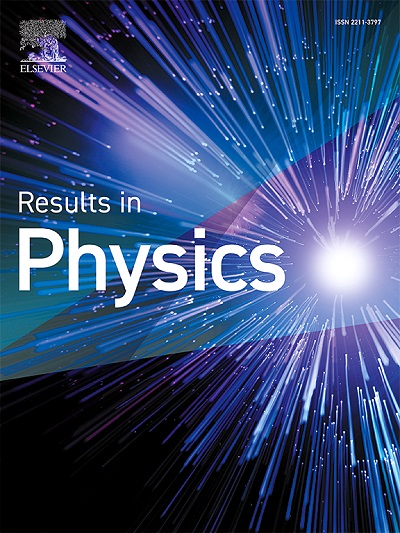压力诱导分解β-SnWO4
IF 4.4
2区 物理与天体物理
Q2 MATERIALS SCIENCE, MULTIDISCIPLINARY
引用次数: 0
摘要
本研究报道了β-SnWO4在静态压缩诱导下分解为Sn、SnO2和WO3。我们进行了高压同步加速器粉末角色散x射线衍射测量,发现分解发生在13.97(5)GPa的压力下,并且是不可逆的。这一结果与之前的一项研究相矛盾,该研究基于密度泛函理论计算和晶体化学参数,预测了从β-SnWO4到α-SnWO4的压力驱动转变。我们的分析表明,观察到的分解与机械或动力不稳定性无关。相反,它可能源于β→α转变的挫折,因为这种转变需要从八面体到四面体的Sn配位变化。对压力如何影响单晶胞体积的评估提供了β-SnWO4室温压力-体积状态方程的准确测定。此外,通过密度泛函理论计算得到了β-SnWO4的弹性常数和模量,以及拉曼和红外模式的压力依赖关系。多个声子模式出现软化现象,并观察到三种声子反交叉现象。本文章由计算机程序翻译,如有差异,请以英文原文为准。
Pressure-induced decomposition of β-SnWO4
This study reports the decomposition of β-SnWO4 into Sn, SnO2, and WO3 induced by static compression. We performed high-pressure synchrotron powder angle-dispersive X-ray diffraction measurements and found that decomposition occurs at a pressure of 13.97(5) GPa and is irreversible. This result contradicts a previous study that, based on density-functional theory calculations and crystal-chemistry arguments, predicted a pressure-driven transition from β-SnWO4 to α-SnWO4. Our analysis indicates that the observed decomposition is unrelated to mechanical or dynamic instabilities. Instead, it likely stems from frustration of the β → α transition, as this transformation requires a change in Sn coordination from octahedral to tetrahedral.The assessment of how pressure influences the volume of the unit cell provided an accurate determination of the room-temperature pressure–volume equation of state for β-SnWO4. Furthermore, the elastic constants and moduli, as well as the pressure dependence of Raman and infrared modes of β-SnWO4, were derived from density-functional theory calculations. Several phonon modes exhibited softening, and three cases of phonon anti-crossing were observed.
求助全文
通过发布文献求助,成功后即可免费获取论文全文。
去求助
来源期刊

Results in Physics
MATERIALS SCIENCE, MULTIDISCIPLINARYPHYSIC-PHYSICS, MULTIDISCIPLINARY
CiteScore
8.70
自引率
9.40%
发文量
754
审稿时长
50 days
期刊介绍:
Results in Physics is an open access journal offering authors the opportunity to publish in all fundamental and interdisciplinary areas of physics, materials science, and applied physics. Papers of a theoretical, computational, and experimental nature are all welcome. Results in Physics accepts papers that are scientifically sound, technically correct and provide valuable new knowledge to the physics community. Topics such as three-dimensional flow and magnetohydrodynamics are not within the scope of Results in Physics.
Results in Physics welcomes three types of papers:
1. Full research papers
2. Microarticles: very short papers, no longer than two pages. They may consist of a single, but well-described piece of information, such as:
- Data and/or a plot plus a description
- Description of a new method or instrumentation
- Negative results
- Concept or design study
3. Letters to the Editor: Letters discussing a recent article published in Results in Physics are welcome. These are objective, constructive, or educational critiques of papers published in Results in Physics. Accepted letters will be sent to the author of the original paper for a response. Each letter and response is published together. Letters should be received within 8 weeks of the article''s publication. They should not exceed 750 words of text and 10 references.
 求助内容:
求助内容: 应助结果提醒方式:
应助结果提醒方式:


